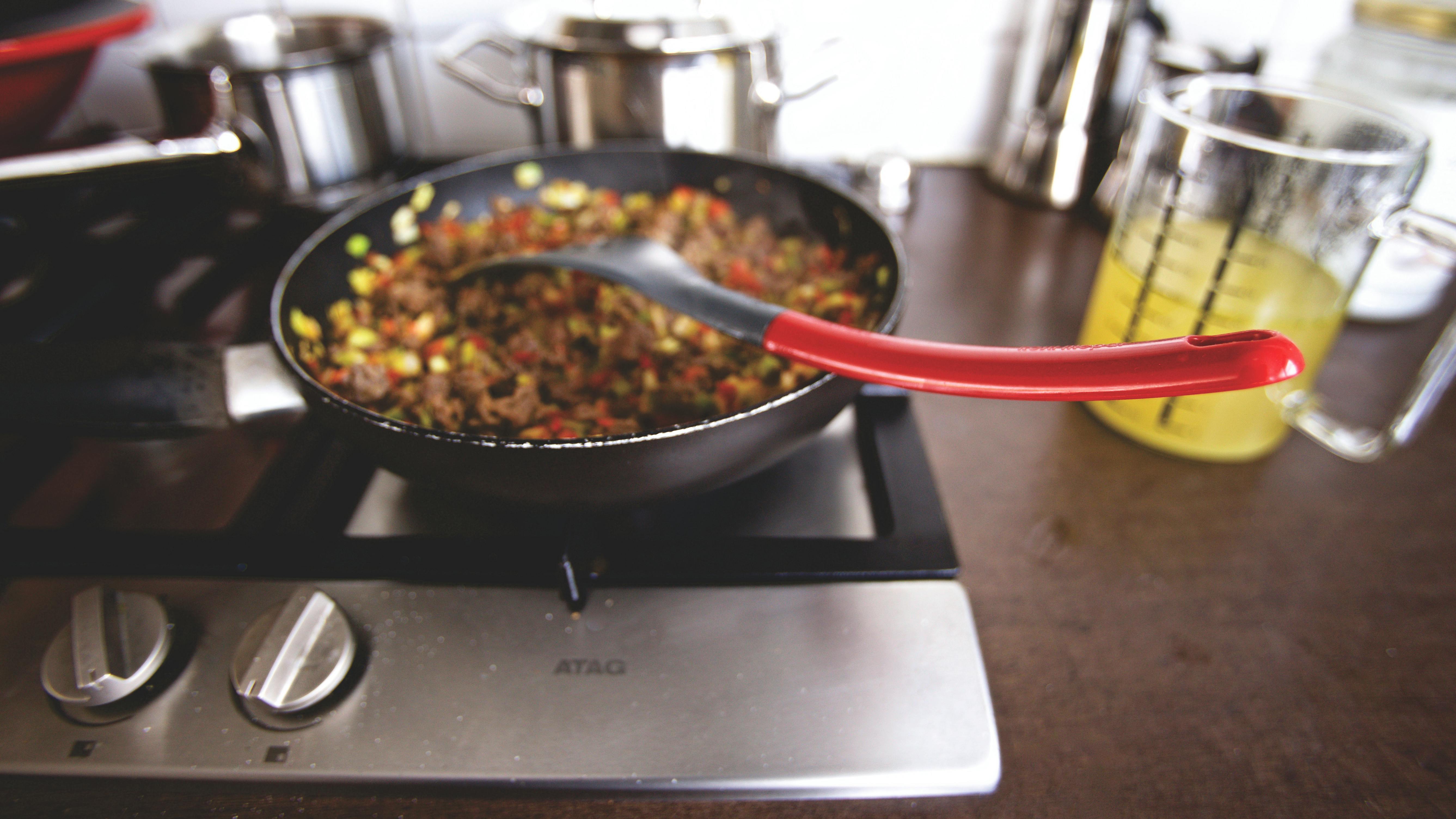
How to install cabinets
Cabinet installation, whether in a kitchen, laundry room, or utility cabinets in a garage, all have the same basic set of installation requirements. Some simple tools are required and are found in most handyman tool bins. Pencils, good carpenters at four feet, tape measure, screw gun, several Quick C-clamps, and a chalk line is a great start. If you have use of a builders level tripod (or can rent one for a day), this will speed up the job a lot. Starting at either end of the cabinet set, make a pencil mark four feet above the floor. Now using the four foot level, transfer that mark along the wall to the other end of the cabinet run and make another pencil mark. Measure to the floor to see if it is four feet above the floor. If it is exactly four feet, then your floor is level. If you’re taller than four feet, you know the floor slopes toward that end. If you start the cabinets at that low end, you won’t be able to keep the cabinets level before you “bump” the floor. If you start at the four foot end you started with, you will be able to shim the cabinets so that they all remain the same height above the floor.
If your cabinets have what is called a four inch high kick feature, you may have the option of lowering this four inch height to make up for a small difference in floor heights. Be careful as cutting too much can make cabinets look squat. If the cabinets came with a separate set of skirting already framed, this also makes leveling much easier. Simply extend the base cabinet supports and check that they are level. A few minor shims or cuts to provide a perfect subbase make base cabinet installation a breeze. You don’t have to worry if each cabinet is level as the bases will do this automatically.
Once the subbases for the lower cabinets are in place I recommend installing the upper cabinets next as it’s just easier. Once the wider base cabinets are installed, the narrower upper cabinets are more difficult to work with. Simply measure from the sub-base to get the top of the cabinets, add the thickness of the counter, add the space you want between the lower and upper cabinets (usually eighteen inches), and make a pencil mark. That is the bottom of your upper cabinets. Since your subbase is level, simply transfer the upper cabinet mark along the run and you have a mark to place the bottom of each upper cabinet. Next, locate all the wall studs and make a vertical mark using your level that protrudes both above and below the cabinets.
This way you won’t be reaching for a stud while standing on a ladder and balancing a cabinet.
It’s a few minutes of work well spent. Next, remove all the cabinet doors and mark each one which cabinets it belongs to as well.
If you’re working alone, take a one-by-two-inch piece of lath and screw it into the wall flush with the bottom of the upper cabinet mark. You will be able to rest the cabinet on the furring while you plumb it and fasten it to the wall. Starting with the first cabinet, go ahead and screw the cabinet securely to the studs with three-inch drywall screws. You can countersink or spun them or use screw washers depending on what you want the final look to be.
Attach two C-clamps to the first cabinet, lift the second cabinet into place, and using the C-clamps, securely attach the stud from the front face of the first cabinet to the second. The combination of the wall furring strip and the two clamps will allow you to loosen and do the job of securing the second cabinet to the wall and to each other. Making sure the front faces are perfectly flush with each other and the heights match up perfectly, standard practice is to pre-drill a screw hole behind the door hinge. Using drywall screws again, insert a screw into the hole making sure the screw will not drive through the stud of the other cabinet (too long). Place a screw behind each hinge. Now fix the second cabinet to the wall and then release the clamps. This same scenario is repeated until reaching the end of the cabinets. You may have gaps where there is a window, but your furring strip will ensure that both sections are mounted at the same height.
With the upper cabinets mounted, go ahead and install the base cabinets in exactly the same way. Each cabinet was bolted from side to side and then to the wall. Once all the cabinets have been installed, go ahead and install your countertops. Backsplash work, electrical connections for microwaves or range hoods and their actual installations must be done before reinstalling the doors. You want to handle doors carefully, as they are the bulk of what people actually see. Level the doors, install the drawer and door pulls, and you’re done.
Almost all municipalities require a building permit for this type of work, since in a kitchen it involves plumbing, electricity, perhaps heating, and possible structural changes as well. A set of working garage storage cabinets may not include any of these items, but be sure to ask first.
pete ackerson
Your friendly building inspector
http://www.wagsys.com
BICES-Building Inspection and Code Compliance System Software








